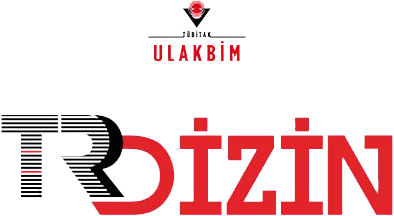
Bu eser Creative Commons Alıntı-GayriTicari-Türetilemez 4.0 Uluslararası Lisansı ile lisanslanmıştır.













Atık sudan izole edilen Pseudomonas spp. suşları ile kurşun ve nikel ağır metallerinin giderimi
Berrin KELOĞLU1, Şahlan ÖZTÜRK2, Süleyman YALÇIN31Nevşehir Halk Sağlığı Laboratuvarı, Nevşehir2Nevşehir Hacı Bektaş Veli Üniverrsitesi/ Mühendislik Mimarlık Fakültesi, Nevşehir
3Türkiye Halk Sağlığı Genel Müdürlüğü, Mikrobiyoloji Referans Laboratuvarı, Ankara
GİRİŞ ve AMAÇ:
Son yıllarda endüstriyel ve teknolojik gelişmelerden kaynaklanan atıkların çevreye olumsuz etkilerini ortadan kaldırmak veya azaltmak için, atık su arıtımında kullanılan klasik yöntemlerin yerine biyoteknolojik yöntemler tercih edilmektedir. Pseudomonas spp. suşları çevresel biyoteknoloji çalışmalarında, çevre kirliliğine neden olan kirletici faktörleri yok etme kabiliyetleri nedeniyle tercih edilmektedir. Bu çalışmada, atık sudan izole edilen 40 adet Pseudomonas cinsi bakteri kullanılarak insanlar ve diğer canlı organizmalar için toksik olan kurşun ve nikel metallerinin giderim mekanizması incelenmiştir. Bu çalışma ile endüstriyel ve evsel atık sulardaki ağır metallerin canlı mikroorganizmalar ile giderimi çalışmalarına katkı sağlanması amaçlanmıştır.
YÖNTEM ve GEREÇLER: Bu çalışma için atık su arıtma tesisinin çeşitli havuzlarından izole edilen toplam 40 adet Pseudomonas spp. ile kurşun ve nikel metallerine olan direnç ve tolerans tespiti çalışmaları yapılmıştır. Belirlenen LC50 değerleri ile hücre yüzeyine tutunma ve hücre içine alınım olmak üzere biyobirikim deneyleri gerçekleştirilmiştir.
BULGULAR: İzolatlardan 22 tanesi Pseudomonas aeruginosa, 11 tanesiPseudomonas stutzeri, yedi tanesi de Pseudomonas mendocina olarak tanımlanmıştır. Suşların 50 ppm metal içeren besiyerlerinde 37 ˚C’deki inkübasyonu sonrası, üreme yoğunlukları doğrultusunda her bir metal için en dirençli beş adet izolat belirlenmiştir. Pseudomonas spp.’ler metal toleranslarının tespiti amacıyla 50 ppm, 100 ppm, 200 ppm ve 400 ppm kurşun ve nikel içeren ayrı besiyerlerinde 24 saat 37 ˚C’de inkübasyona bırakılarak % ölüm ve LC50 değerleri hesaplanmıştır. Bu çalışmanın sonucunda; en dirençli suşlar Pb (+2) için P. aeruginosa BK14, Ni (+2) için P. stutzeri BK23 olarak belirlenmiştir. LC50 değerlerinde metal içeren besiyerlerinde 37 ˚C’de tekrar inkübasyona bırakılan BK23 ve BK14 suşlarında sırası ile 10. ve 30. dakikalarda ve 1, 2, 4, 8, 12, 16, 20 ve 24. saatlerde biyobirikim deneyleri yapılmıştır. Metallerin giderimi, hücre yüzeyine adsorbsiyon ve hücre içine alınım şeklinde gerçekleşmiştir. P. aeruginosa BK14 suşu ile 204,30 ppm Pb (+2)’nin %56’sı hücre yüzeyinde olmak üzere % 84 giderim; P. stutzeri BK23 suşu ile 186,21 ppm Ni (+2)’in %47’si hücre yüzeyinde olmak üzere toplamda %76 giderim gerçekleşmiştir.
TARTIŞMA ve SONUÇ: Elde edilen sonuçlara göre her iki metal için de giderim daha çok hücre yüzeyine tutunma yolu ile olmuştur. Bu çalışma ile ilk defa kurşun ve nikele dirençli canlı Pseudomonas spp. ’ler ile ağır metal giderim mekanizması hücre yüzeyine tutunma ve hücre içine alınım şeklinde mukayeseli olarak değerlendirilmiştir.
Removal of the lead and nickel heavy metals with Pseudomonas spp. strains which isolated from waste water
Berrin KELOĞLU1, Şahlan ÖZTÜRK2, Süleyman YALÇIN31Nevşehir Public Health Laboratory, Nevşehir2Nevşehir Hacı Bektaş Veli Universiyt/ Faculty Of Engineering And Architecture, Nevşehir, Turkey
3Turkey General Directorate Of Public Health, Microbiology Reference Laboratory, Ankara, Turkey
INTRODUCTION: In recent years, biotechnological methods are preferred instead of classical methods used in wastewater treatment in order to eliminate or reduce the negative effects of wastes on the environment arising from industrial and technological developments. Pseudomonas spp. are preferred in environmental biotechnology studies because of their ability to remove pollutant factors that cause serious environmental pollution. In this study, the removal mechanism of lead and nickel metals which are toxic for humans and other living organisms were investigated with 40 Pseudomonas genus bacteria which isolated from waste water. With this study, it is aimed to contribute to the removal works of heavy metals in industrial and domestic wastewater by living microorganisms.
METHODS: 40 Pseudomonas spp. which were isolated from the pools of wastewater treatment plant, have tolerance and resistance tests for lead and nickel. Bioaccumulation tests were performed using the determined LC50 values and the removal of metal ions by the Pseudomonas spp. was evaluated as cell uptake and cell surface involvement.
RESULTS: 22 isolates were identified as P. aeruginosa, 11 were P. stutzeri and seven were P. mendocina After incubation of bacteria strains at 37 ˚C for 24 hours in media containing 50 ppm metal, the most resistant five isolates were determined for each metal. For determination of metal tolerances, Pseudomonas spp. are incubated at 37 ° C for 24 hours on separate media containing 50 ppm, 100 ppm, 200 ppm and 400 ppm lead and nickel and the % of death and LC50 values were calculated. According to results of this study, it was determined that isolates highest metal tolerance for Pb (+2) is P. aeruginosa BK14 and for Ni (+2) is P. stutzeri BK23. Bioaccumulative assays were performed at 10, 30 minutes and at the 1st, 2nd, 4th, 8th, 12th, 16th, 20th and 24th hours, respectively. Removal of the metals was carried out on the cell surface by adsorption and cell uptake. P. aeruginosa BK14 strain removed 84 % of 204,30 ppm Pb (+2) in total, as which 56 % of on the cell surface and P. stutzeri BK23 strain removed the 76 % of 186,21 ppm Ni (+2) in total, as which 47 % of on the cell surface.
DISCUSSION AND CONCLUSION: According to the results obtained, the removal of both metals was mostly due to the attachment to the cell surface. In this study, the heavy metal removal mechanism with live Pseudomonas spp.which resistant to lead and nickel was evaluated as comparative to cell surface attachment and cell uptake for the first time.
Makale Dili: Türkçe
(1382 kere indirildi)


